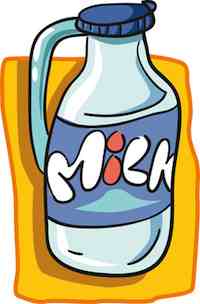- MENU
- HOME
- SEARCH
- WORLD
- MAIN
- AFRICA
- ASIA
- BALKANS
- EUROPE
- LATIN AMERICA
- MIDDLE EAST
- United Kingdom
- United States
- Argentina
- Australia
- Austria
- Benelux
- Brazil
- Canada
- China
- France
- Germany
- Greece
- Hungary
- India
- Indonesia
- Ireland
- Israel
- Italy
- Japan
- Korea
- Mexico
- New Zealand
- Pakistan
- Philippines
- Poland
- Russia
- South Africa
- Spain
- Taiwan
- Turkey
- USA
- BUSINESS
- WEALTH
- STOCKS
- TECH
- HEALTH
- LIFESTYLE
- ENTERTAINMENT
- SPORTS
- RSS
- iHaveNet.com: Health
Cara Smusiak, Naturally Savvy

When people think of eco-friendly foods, they often think of organic foods and family farms. But foraging for wild foods is perhaps the purest way to eat green.
Foraging is harvesting indigenous, wild plants and fungi, as well as fishing and hunting--it's all about eating what the land provides. Because foraged plants are indigenous, they are best suited for the soil in your area, so they grow efficiently and in abundance, without the care, tending and treatments required of farming. And since most people forage close to home, the carbon footprint of your foraged foods is almost zero.
While many people think foraging is for people who live out in the country, nothing could be further from the truth. Urban dwellers can forage both in the city, and in outlying areas.
Journalist and urban forager Becky Lerner lived off foods she foraged for a week last May, chronicling her culinary adventure at CultureChange.org. Her mission was to eat only foods she foraged from along sidewalks, in parks and wilderness areas, and in yards (gardens were off limits) in Portland.
Lerner, who writes about foraging at FirstWays.com and teaches introductory urban foraging, writes that foraging isn't just about finding sustenance during emergencies. "At its core, wild food offers you a deeper way to explore your relationship to the land outside your door, to recognize the gifts Gaia (the Greek goddess of the Earth) has left for you."
Foraging might sound fun at first, but it isn't as easy as swinging by the local market. You have to put in the time, and you need to know which plants and fungi are edible, and which ones will cause illness or even death. Books on local wild foods and the foods of aboriginal peoples in your area are a good place to start, but it's important to spend time learning about the edible plants in the field, so to speak, side-by-side with a local foraging expert.
Lerner recommends Wild Food Adventures in Portland, and Steve Brill, who hosts a variety of foraging events across the Eastern U.S. Many local collages also offer non-credit summer classes in foraging.
If you just want to get a taste of foraging without investing too much effort, there are a few easily recognizable edible plants out there to get started with.
Dandelions
Dandelions may be a nuisance to most homeowners but they're also an edible and delicious plant. Dandelion greens are crammed full of nutritious vitamins, minerals and antioxidants, and they're tasty in a salad, particularly early in the season (bitterness increases in the summer), or in the late fall after the first frost. Dandelion flowers are also edible--pluck the petals and throw them in a salad, or use the whole flower to make Dandelion wine. Note: Be sure that the area where you're foraging for dandelions has not been sprayed with pesticides.
Cattails
Just head to any pond or wet ditch and you'll likely to find some cattails. You can eat various parts of cattails in different ways. In early spring, cattail shoots can be plucked form the water and eaten raw--just make sure you know they're not wild iris, which is poisonous. The cattail spike above the seed head can be boiled until tender (about five to 10 minutes), and then eaten like corn on the cob.
Pine Cone Seeds
We often think of pine cones as decoration during the holidays or nuisance as they riddle the ground, but the seeds in the pine cones are a good source of nutrition. Break off the scales and look for the seeds underneath; each scale should have two seeds. The seeds can be eaten raw or they can be toasted, and they're great on their own, or to add a crunch in a salad.
Chives
With a lavender-colored flower and tubular, hollow leaves, chives are as pretty as they are tasty. Growing across North America, chives are the smallest species of the onion family, and they taste quite similar to green onions or scallions. The leaves are the edible portion, but they lose their flavor when cooked, so they're best when raw, particularly if chopped and sprinkled on salads, soups, potatoes, and other foods.
Foraging isn't for everyone, but it's worth testing out what nature has to offer. Who knows--you may discover a love of cattails with a side of dandelion salad.
REFERENCES:
To learn more about foraging and edible wild plants, check out these sources:
"Foraging New England: Finding, Identifying, and Preparing Edible Wild Foods and Medicinal Plants,"
by Tom Seymour (AFalconGuide);
"Edible Wild Plants: A North American Field Guide to Over 200 Natural Foods
,"
by Thomas S. Elias and Peter Dykeman;
"The Complete Guide to Edible Wild Plants, Mushrooms, Fruits, and Nuts, 2nd: How to Find, Identify, and Cook Them
," by Katie Letcher Lyle;
"A Garden of Herbs
,"
by E.S. Rohde.
Available at Amazon.com:
Foraging New England: Finding, Identifying, and Preparing Edible Wild Foods and Medicinal Plants
Edible Wild Plants: A North American Field Guide to Over 200 Natural Foods
Last Child in the Woods: Saving Our Children From Nature-Deficit Disorder
Copyright © Naturally Savvy. All rights reserved.
AGING | ALTERNATIVE | AILMENTS | DRUGS | FITNESS | GENETICS | CHILDREN'S | MEN'S | WOMEN'S
Health - Foraging is Green Eating at Its Purest